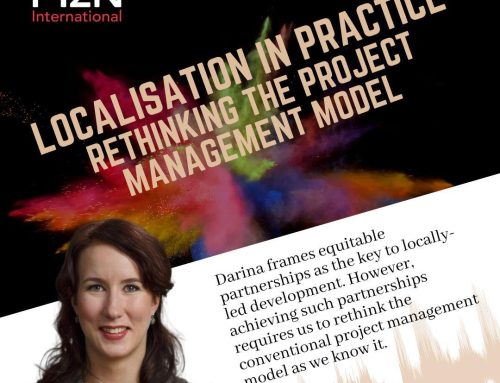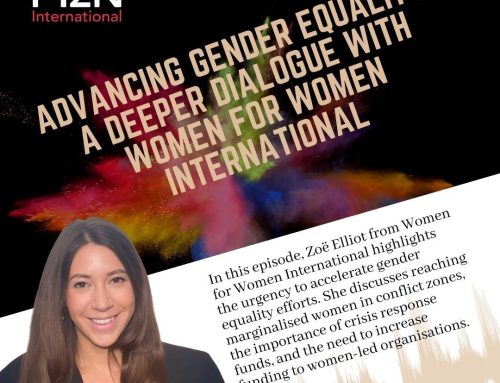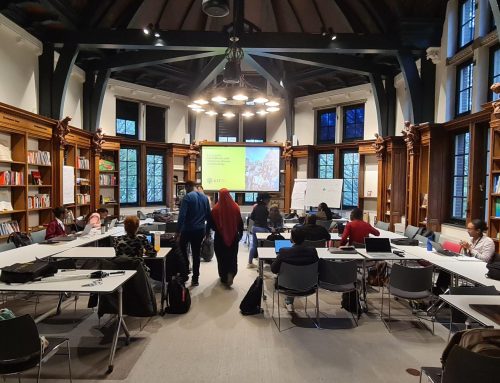The ability to write successful proposals is essential for all development and aid organisations. Though we encourage exploring alternative funding streams, the capacity for attracting donor funds by winning bids remains at the centre of successful NGOs.
With that in mind, MzN International’s donor funding team has summarised the most important tips for creating proposals that are more likely to stand out:
1. Plan enough time and budget
Many proposals fail for the simple reason that not enough time is planned for collecting information. A majority of proposals require a vast amount of information to be gathered, comprehensive plans to be drawn up and convincing budgets to be written. It is impossible to collate this information in a week, let alone compose it in a way that makes sense and is professional. For larger proposals, multiple country teams are often involved in the process. Giving them adequate notice to prepare often yields better materials and projects.
Planning is an essential way of communicating to the donor that yours is a professional, competent organisation. Even the most effective organisations can fall into traps when it comes to planning, relying too much on their track record rather than investing the appropriate time and effort into properly preparing for the proposal.
Planning is an essential way of communicating to the donor that yours is a professional, competent organisation.
We recommend you plan well ahead and allocate enough funding for exploration visits, consultants, creating graphic material and context analysis. This is particularly important in proposals where country offices are included. Last minute information requests from country offices will likely yield low quality responses.
2. Be complete and concise
Include all – and only- the information the donor is asking for in your proposal. If responding to a Request for Proposals (RFP), follow the format and order of the RFP. Follow the guidelines and instructions, and resist the urge to include all other credentials, policies and experience that you assume might be useful to include. These will most likely be ignored anyway or, worse yet, disqualify the proposal.
As well as having the correct information, the layout and language should be clear and concise. After reading the first page, the reader should not doubt the project’s key objectives, who the beneficiaries are (and how many), how much funding is being asked for and what the impact will be.
A well-written proposal gets straight to the point, is succinct, reader-friendly and well structured.
If there is no template provided or page budget given, a proposal generally should not exceed 10 to 15 pages. This should include all aspects asked for in the RFP with the reference materials (staffing, schedule, detailed budget) confined to a well-structured and correctly referenced appendix.
Language is important: A well-written proposal gets straight to the point, is succinct, reader-friendly and well structured. Avoid jargon, too many acronyms and passive language.
3. Know the donor
Proposals should address the donor’s needs and requirements. Research their mission, values and objectives and tie them into your proposal. Know exactly what projects have been previously and are currently funded and what areas, sectors and themes they prefer. Include broader themes that the donor might be involved with, such as environmental sustainability or the SDGs, and align your outcomes with aspects of these themes.
Always stick to the guidelines of what is funded and up to which amount. Asking for more funding than available, or in areas the donor does not support, might lead them to reject your proposal.
4. Stick with the donor’s format
Where the donor prescribes a specific format, stick to it! If no format is prescribed, stick with the order and priority in which the RFP asked for information.
To make proposals comparable, donors often create checklists distilled from the RFP and presenting your information in that order is likely to increase the proposal’s chances of success.
5. Follow all instructions
While some instructions donors give can feel misleading or even contradictory, you must read all guidelines and instructions carefully and follow them to the letter. A proposal that does not follow the given instructions is rarely given any further consideration.
A proposal that does not follow the given instructions is rarely given any further consideration.
6. Be correct and specific
Proposal turnaround times are getting shorter. Whilst one might think that a few formatting or budgeting errors may be excusable, it is important to bear in mind that the competition for grants is increasing and with it, the donor’s choice of implementing partner.
It may sound simplistic, but double checking page numbers and calculations, as well as ensuring that all rationales and assertions are truly applicable, add value and are relevant might put your proposal on top of the pile.
7. Present yourself credibly
Even if the bidder is well known, the donor is unlikely to know all relevant facts and credentials about the bidding organisation. Credentials should be summarised as short and concise success statements to support the impression of an experienced organisation.
These days, donors are especially concerned about organisational and project management capacity.
These days, donors are especially concerned about organisational and project management capacity. Provide details of staff experience and updates on similar projects currently being implemented or from previous projects to demonstrate that your organisation can run projects on time and budget.
8. Be realistic, be accountable
Any proposal must include specific, realistic goals that can be measured within a set timeframe, against a robust methodology and identifies the beneficiaries.
Bidders commonly underestimate the time and costs required for staff development, transparent accounting systems, technology support and other infrastructure needed for programmatic excellence. Lowballing these costs raises questions regarding your organisational capacity.
Make sure your proposal includes all of the often under-accounted costs. If the final budget exceeds what the donor usually funds, identify the shortfall and find other sources of funding for the project. Alternatively, adjusting the scope or scale of the project proposed, downscaling as necessary, can be more impactful than attempting to achieve more with an underfunded project. Under-budgeting in proposals should never be an option.
Adjusting the scope or scale of the project proposed can be more impactful than attempting to achieve more with an underfunded project.
9. Make it sustainable
Sustainability is more than a buzzword, and proposals are far more likely to succeed if your sustainability plan does not simply read ‘look for other funding towards the end of this project’.
Chris, Director at MzN International, thinks that “donors need to demonstrate a lasting difference, which in turn requires financial and programmatic sustainability”. This can come in many forms ranging from private sector engagement to income generation or beneficiaries’ involvement.
10. Avoid the “budget rejection trap”
A lot of bidders spend considerable time writing about the project and treating the budget as an afterthought that the ‘finance people’ will handle. In most cases, this causes a discrepancy between the financials and the narrative, especially when the former has been created under considerable time pressure.
We recommend you start with the budget on day one and develop it concurrently with the narrative,
Many good project proposals fail because the proposed budget makes no sense or adds no value (we call it the “budget rejection trap”). It also shows a lack of organisational capacity that donors are increasingly less willing to overlook.
We recommend you start with the budget on day one and develop it concurrently with the narrative. Do not separate programme and finance staff during the proposal-writing period, rather ensure both work closely together. You may need to provide some basic budgeting training for programme staff to assist in this process.
Proposal Writing: The Bigger Picture
Proposal writing alone is not the key to a successful funding strategy, but it is certainly part of it. A strong proposal that meets the donors’ criteria, highlights the strengths of your organisation as well as differentiates yours from others, will always be a strong contender. That being said, simply submitting good proposals is not sufficient to develop a long-term sustainable funding stream.
The process of programme development and the art of proposal writing needs to be part of something more holistic. It is part of a strategy that incorporates networking and strategic positioning as well as thought leadership and a demonstration of impact. Programme development should be considered part of a wider approach to positioning your NGO, not only for acquiring funding but for creating impact, as part of your broader mission.
We offer proposal writing and editing support services. Contact us for more information.






